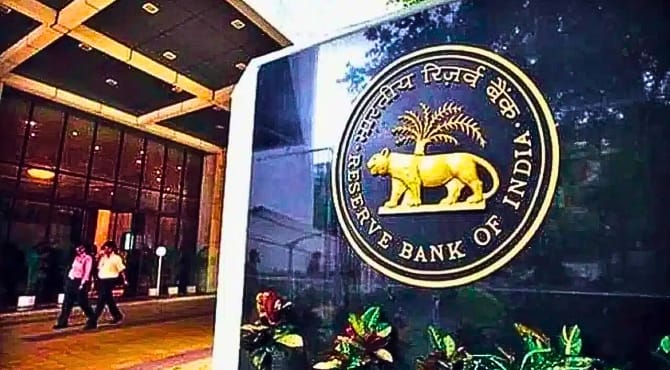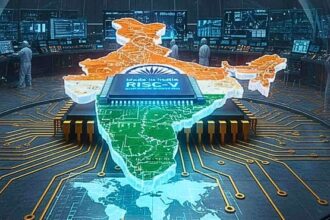The Reserve Bank of India (RBI) has expressed its apprehension about the effect of global political conflicts on international money transfers. In its recent payment systems report, RBI aimed the finger at sanctions, financial restrictions, and other obstacles that could hamper the flow of money from one country to another. The warning is issued at a time when India is the leading recipient of money sent home by the workers abroad.
The growing threat
RBI’s concerns are quite real. The world’s financial system today is based on a handful of major currencies and a centralized structure. When tensions arise between different political entities, this very dependence turns into a weakness. As an effect of sanctions and financial limitations, which are imposed by the most influential states, targeted countries can be totally detached from the global payment network, thereby creating adverse consequences that affect even the non-involved parties.
The central bank states that such impediments do not only affect governments but also hinder market access and payment channels on which ordinary people and enterprises rely. In the event of a sanction, banks of the sanctioned country may encounter difficulties in processing international payments; thus, sending workers might be left without a way to send money back, and businesses will not be able to pay their foreign suppliers.
India’s response
After recognizing these threats, the RBI is not inactive. Apart from domestic reforms, the central bank has been coordinating efforts with global counterparts to revamp the worldwide payment mechanisms that eventually may become stable and less susceptible to interruptions. Making the money transfer procedure between the sender and the receiver faster when the former remits money to the latter in India is a significant prioritized area.
RBI has initiated a deep inquiry to locate the sources of delay in inward remittances. Anyone who has experienced the waiting for several days until the international transaction appears in their bank account will be aware of how exasperating this can be. The central bank wants to pinpoint these obstacles and remove them so that money transferring becomes quicker and more efficient.
The UPI solution
The Unified Payments Interface of India proved to be an effective tool locally, and now the RBI is leveraging it for enhancement of cross-border payments. The plan is straightforward yet potent: connect India’s UPI with other countries’ similar instant payment systems. By doing so, the money will be able to be transferred from one country to another with the same easiness as it is now in local friends’ transactions.
One might ask: what would be the point of cross-border remittances if we already had UPI? The answer is that the payments via UPI could have been utilized by the Indian tourists who are traveling to Bhutan, France, Mauritius, Nepal, Singapore, UAE, and Qatar. How about paying at a restaurant in Paris or at a shop in Dubai by scanning the QR code with your Indian bank app? There is no need for currency exchange or fees.
India is now a part of Project Nexus, which is a collaboration with Malaysia, the Philippines, Singapore, and Thailand. This initiative interlinks different countries’ payment systems and thus provides the means for the instantaneous cross-border retail transactions. Hence, it acts as a new route for the money that goes around the traditional banking delays.
India’s remittance leadership
The timing of these efforts is of great importance as India is putting a lot at risk. The country remitted a historic $129.1 billion in 2024, which is more than twice the amount that Mexico, the second-largest recipient, received. Such money originates from millions of Indians working abroad and thus, it is becoming an essential source of income for the families back home as well as a means of foreign exchange reserves accumulation for the Indian government.
These remittances are not only the figures on the balance sheet. They are the fruits of hard work of Indian professionals, laborers, and entrepreneurs who reside abroad and send money back home for their children’s education, parents’ healthcare, and family’s everyday needs. In case of any obstacles in the way of this, millions of households will suffer.
Payment growth story
At the same time when the country is facing issues with cross-border challenges, the Indian domestic payment ecosystem has been on a steep rise. Transaction volumes increased from 32.48 billion in 2019 to 208.49 billion in 2024. The aggregate value of transactions soared from Rs 1,775 lakh crore to Rs 2,830 lakh crore during this timeframe. Only the first six months of 2025 had 125.49 billion transactions worth Rs 1,572 lakh crore.
The risk that the RBI is pointing at concerning the geopolitical conflicts is very real and could be fatal for global financial flows. But India is not a country that just sits and waits for problems to arise – it is instead proactively working on solutions. By promoting the international use of UPI, becoming a member of multilateral projects such as Project Nexus, and striving to eliminate the delays in payments, India is ensuring a sustainable and secure cross-border payment platform. When the global tensions persist, it is these measures that will be instrumental in safeguarding the financial lifeline that binds millions of Indians living abroad with their families residing at home.









